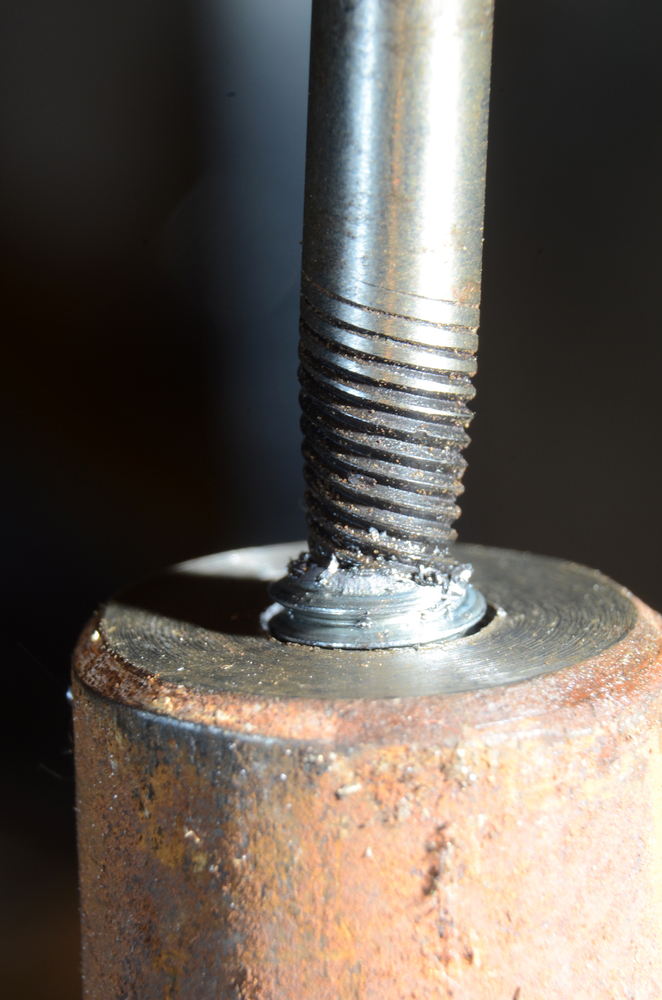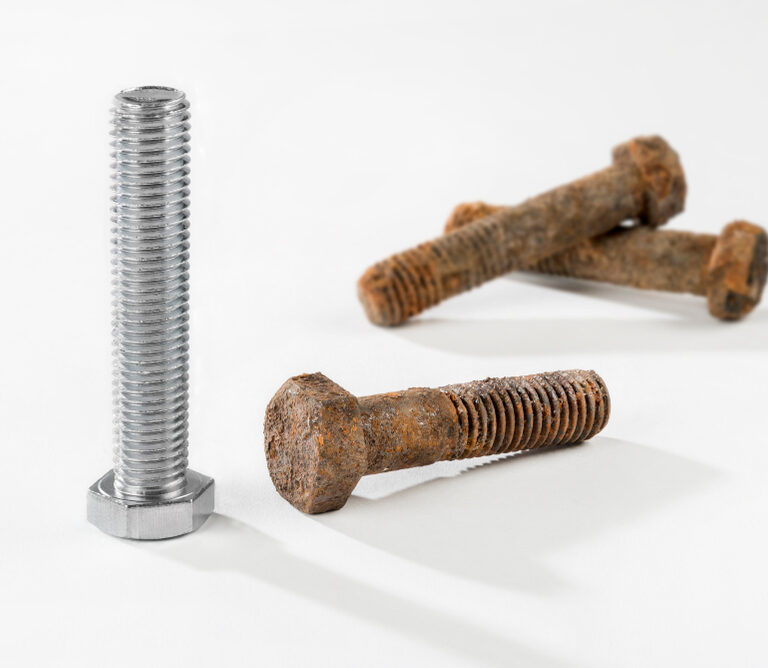Metal bolts are one of the most popular types of fasteners out there, and for good reason. Once secured in place, bolts are extremely strong and will keep just about any materials together long into the future. There are times, however, when you want to remove a bolt. When everything is working as intended, you simply use a wrench and turn the bolt counterclockwise and it will come out as easily as it went in. Unfortunately, bolts can sometimes break, making them extremely difficult to remove.
Types of Broken Bolts
There are several different ways that a bolt can break and get stuck. The following are the most common issues that you may run into with your bolts.
Stripped Bolthead
This is where the head of the bolt has been worn or rusted to the point where it is so rounded that your normal wrench or even plyers cannot get a good grip on the bolt.
This can occur when the bolt was put in using improperly sized tools, or because rust has resulted in the edges of the bolt getting worn down. If this is the issue you are facing, follow the instructions on how to remove a stripped bolthead below.
Broken Bolthead
A broken bolthead is when the very top of the bolt actually breaks off, leaving the treaded portion stuck in the hole. This can happen for a variety of reasons including having a defective bolt that is weaker than it should be, significantly over tightening the bolt, or the bolt weakening due to rust.
When this happens, there is no way to grip the bolt at all, which makes removal difficult. In many cases where this happens, the remaining portion of the bolt is flush with, or even under, the top of the material being bolted, which makes it even more challenging. If you have a bolt with a broken head, follow the instructions on how to remove a broken bolt below.
Stripped Bolt Threads
Bolts can also break by having the threads get stripped. When this happens, the bolt is stuck in the hole but turning it will not cause it to tighten or loosen. This issue is often caused by someone forcing the bolt in while the bolt threads are improperly aligned, or if someone attempts to pound a bolt in using a hammer. If this is your situation, follow the instructions on how to remove a stripped bolt below.
How to Remove Each Type of Broken Bolt
Each type of broken bolt will require a different approach for removing it. Find the problem you are facing with your bolt and follow these simple instructions to help get it out so you can continue with your project.
Removing a Stripped Bolthead
If the top of your bolt has been worn away, you will need to find a way to get a strong grip onto the bolt itself. There are several options available to accomplish this. If the bolt is not extremely tight, you may be able to grip the rounded head with normal plyers. Grip them as tightly as you can, and slowly try to unscrew the bolt. With a little luck, you will be able to get it out without much trouble.
If the bolt is tightened down securely, you can try the same technique using vice grips. Vice grips are similar to plyers, but they have a mechanism built in that allows you to apply significantly more force to the grip and lock it in place. This is often enough to properly grip the bolt and remove it.
Another option is to get an adjustable bolt removal tool, which is a socket specially designed to fit onto a worn bolthead. Once in place, you can tighten it down so it will securely grip even a round bolt, which allows you to remove it.
These are the easiest options for removing a bolt with a rounded or stripped head. If none of these work, however, you can follow the instructions for removing a broken bolthead, which will also work for a stripped bolthead.

Removing a Broken Bolthead
If the top of your bolt has completely broken off or cannot be gripped at all, you will want to purchase a broken bolt extraction kit. This kit will include everything you need to go through the following steps, which will allow you to remove virtually any broken bolt.
Mark the Center of the Bolt
The first thing you want to do is make a slight dent into the top of the bolt, which will help to guide the drill bit in the next step. This can be done using a center punch tool and a hammer. If you do not have a center punch tool, you can also use a strong nail and a hammer to accomplish this step. Just make sure that you make this mark as close to the center of the broken bolt as possible.
Drill the Pilot Hole
The next step is to take a left-handed drill bit from the broken bolt extraction kit and drill in a pilot hole. These are special drill bits that are threaded the opposite way as normal since they are designed specifically for broken bolt removal. Because of this, you will be drilling into the bolt with your drill on the reverse setting.
The specific bit you choose should be a little smaller than half the diameter of the bolt itself. This will ensure it is strong enough, so it does not break, but not so large as to damage the threads on the bolt itself.
Once you have the bit in your drill, apply strong downward pressure on the bolt and begin drilling, keeping the pressure centered as much as possible. You will need to drill down about a half an inch so that the extraction bit can be secured in place. In many cases, however, the bit will actually create enough torque on the bolt that it begins to unscrew during this process.
Insert the Extraction Bit and Remove the Bolt
If the bolt did not unscrew in the previous step, remove the bit from the drill and select the extraction bit from your removal kit. This bit will have a left-handed bit on one side that is tapered so that when it is drilled into the broken bolt, it will secure itself tightly. On the other end will be a hex or t-head.
Secure the bit into the hole and slowly engage the drill (still in reverse). Hold the drill tightly so that it does not twist out of your hands. As the extraction bit enters the bolt, it will create a growing amount of torque. You may need to apply additional power from your drill but do it slowly.
Once the extraction bit has sufficient torque applied, the bolt will begin turning and come out of the hole without a problem.
Removing a Stripped Bolt
If you have a bolt that has the top of it in fine shape, but the threads of either the bolt or the hole it is in are stripped, you will need to take a different approach. You can tell this is the problem when you are able to turn the bolt in either direction, but it never gets tighter or looser. When this is the case, you will not be able to use the same hole again even after the bolt is removed, so keep that in mind.
Since you will not be reusing either the bolt or the hole, the easiest way to remove the broken bolt is to simply drill it out. The first step is to cut off the top of the bolt, if possible. Using a reciprocating saw (often called a Sawzall) and a metal cutting blade, simply cut through the top of the bolt as low as possible.
Next, using a drill bit made for drilling metal (the bits from the extraction kit should work fine), select a bit that is as close to the same size as the bolt itself. When ready, begin drilling down into the bolt until it is all the way through.
This will leave you with an open hole and the metal shavings that remain from the bolt. Depending on the project, you can leave the hole as it is, or fill it in with an appropriate hole filler before moving on with your work. The metal shavings can typically be cleaned up with a simple magnet.
Avoid Broken Bolts in the Future
Now that you have removed the broken bolt, you will want to make sure that you do everything you can to avoid this frustrating situation in the future. This is done by making sure to always use the proper sized bolts and secure them in place using the right tools. In addition, make sure that you are not overtightening bolts, which could cause the head to snap right off. If this does happen, however, at least you can be confident that you know how to remove a broken bolt going forward.
